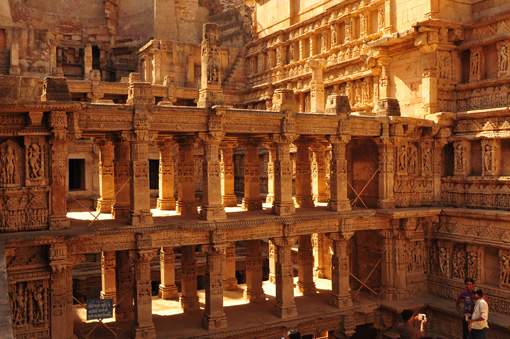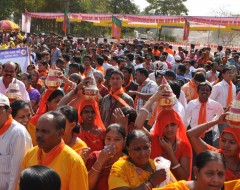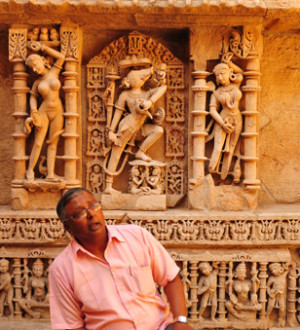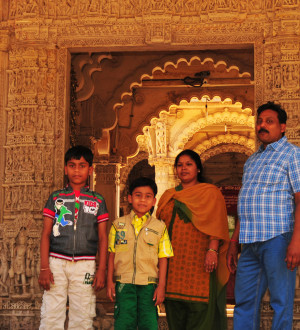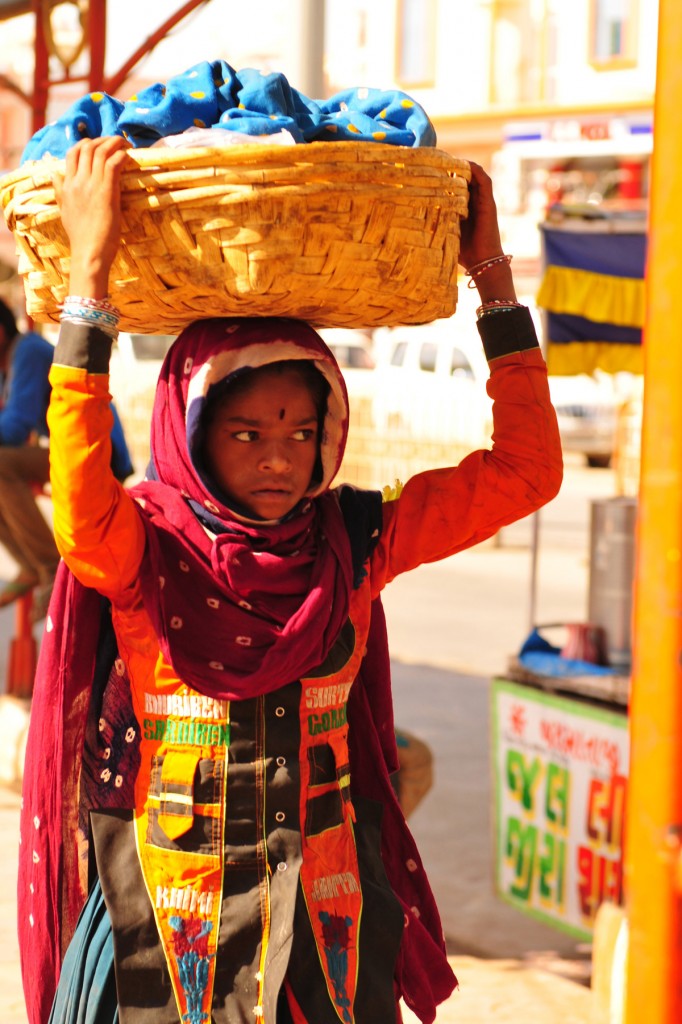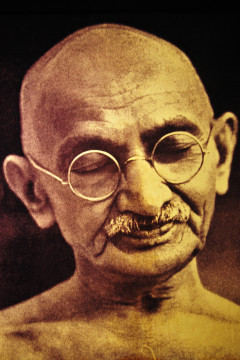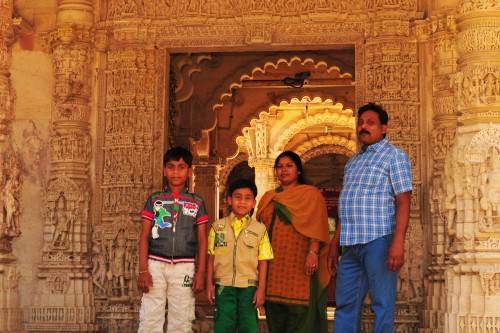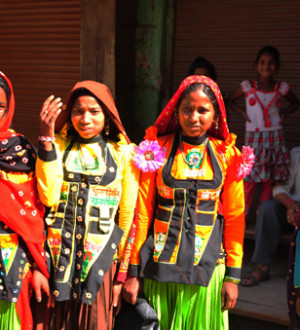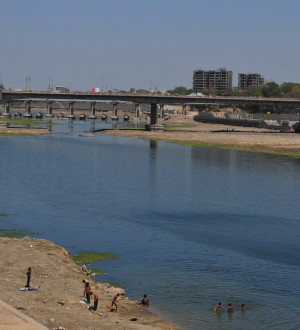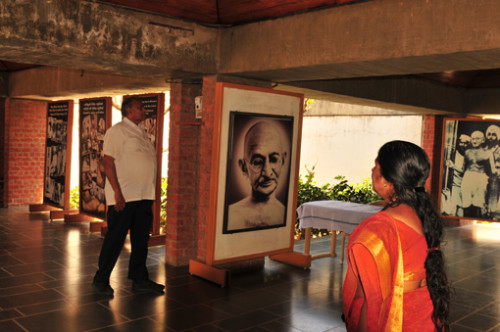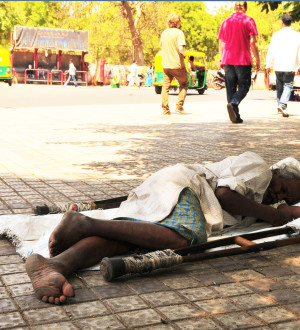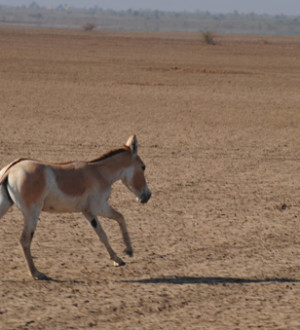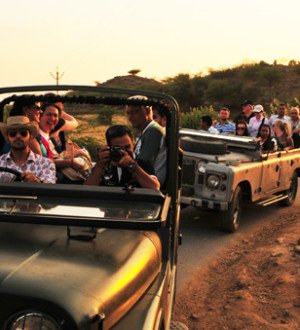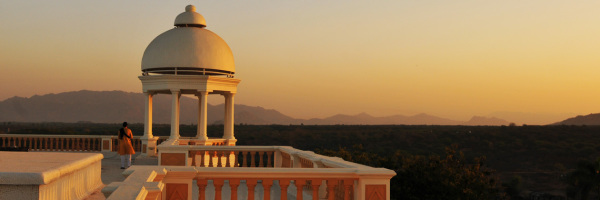Gujarat is a State in northwestern India, on the border with Pakistan and Rajasthan in the north east, Madhya Pradesh in the east, and Maharashtra and the Union territories in the south while the Arabian Sea borders the state both to the west and the south west. Gujarat is famous for it’s beautifull textiles. The women here are the most colourfull dressed in whole India. You can explore the desert and swamps of the Rann of Kutch or visit the stunning temples and mosques around Ahmedabad. However, Ghandi-Land, its friendly people and more than 1600 Kilometer of coast and unspoiled beautifull beaches are waiting for you.
The first settlers in the State of Gujarat were Gujjars who happened to be an ethnic group of India, Pakistan and Afghanistan. Although their originis remain uncertain, the clan appeared in northern India and in Saurashtra about the time of the Huna invasion. The name of the tribe was ‘sanskritized’ to ‘Gurjara’ who followed the main religions of Hinduism, Islam, Sikkism and Christianity. In 1600’s, the Dutch, French, English and Portuguese – all established bases along the coast of the region acquiring several enclaves along the Gujarati coast, including Daman and Diu as well as Dadra and Nagar Haveli.
The British East India Company established a factory in Surat in 1614, which formed their first base in India, but it was eclipsed by Bombay after the British acquired it from Portugal in 1668. The Company wrested control of much of Gujarat from the Marathas during the Second Anglo-Maratha War. Many local rulers, notably the Maratha Gaekwads of Baroda (Vadodara), made a separate peace treaty with the British, and acknowledged British sovereignty in return for retaining local self-rule.
Friendly people, colourfull dresses, blessed with rich cultural heritage
Gujarat’s culture forms an integral part of Indian culture. Well known for its rich Culture and Heritage, its cultural diversity has preserves of ancient art and craft techniques. Gujarat’s people exhibit warm and friendly nature, god fearing and possess untouched simplicity with ‘simple living, high thinking’ attitude. Concerned and affectionate, the communities are varied. The diverse ethnic groups constituting the Gujarati population has resulted in the cultural diversity of Gujarat.
The folklore and folk arts of Gujarat form a major part of the Culture of Gujarat. It preserves the rich tradition of song, dance and of course drama as well.
Gujarat is also well known as the land of rich handicrafts like Patola weaving, khadi, bandhani, block printing, embroidery, namda, rogan painting, matani pachhedi or woodcrafts, metal crafts, bamboo crafts, pithora, pottery and many more handicrafts. You can now image a little bit how much is to see in Gujarat. But let’s swift to the marvelous monuments and the stunning construction of some of Gujarats religious heritages.
Hill-top shrines like Ambaji, Palitana, Girnar and Pavagadh are similarly prominent in legend and historical. Palitana is a hilltop place of pilgrimage for Jains. 863 temples of all sizes crowd the hill which has to be paced on foot. Stone and marble spires with their rich detail of carving make for Palitana’s architectural splendor. One of the most outstanding monument is the Sun Temple
The stunning Modhera Sun Temple
Constructed in 1026-27 A.D. during the reign of King Bhimdev I of Patan, the temple is dedicated to Surya or the Sun God. Although it bears a dilapidated look, it is still a magnificent specimen of superb artistry of Gujarat’s architects of the bygone days. Modhera’s sun temple is positioned in such a manner that at the equinoxes the rising sun strikes the images in the sanctuary. It also incorporates an amusement park, a museum, a cafeteria, picture gallery and library. The canvas on the walls and pillars depict the incidents from the Ramayan and the Mahabharat, and forms of gods and goddesses and the way of life of the people of that time. An interesting iconograph is one with three heads, three arms and three legs. To the religious sightseeing places in Gujarat belong: Akshardham-, Girnar-, Ambaji-, Palitana-, Somnath-, Dakor and as mentioned the famous Modhera Sun Temple .
Impressiv Historical and Archaeological Monuments everywhere
The cultural mix enhanced with over 4500 years of history has endowed Gujarat with some of the greatest historical and archaeological monuments. While Lothal offers an unparalleled insight into the Harappan civilization, Ahmedabad has specimens of Indo-Sarcenic architecture, Palitana has a profusion of temples in the Jain style, Junagadh displays Buddhist caves and Rajput architecture appears all over different parts of Gujarat. A major Tourist destination of immense potential, it’s historical monuments represent the great religions of Asia – Hindu, Buddhism, Jain, Islam, Parsi and Sikh.
Some Artifacts to visit:
Calico Textile Museum: Gujarat’s most popular city, Ahmedabad has Calico Textile Museum which is the reflection of city’s most prosperous textiles – cotton, silk and gold and is world famous, which is displayed in famous carved wooden Havelis with rare textiles dating back to 17th century.
Sardar Patel Museum: Sardar Patel Museum is memorial Museum of the freedom fighter Sardar Vallabhbhai Patel. The musuem is housed in the old Raj Bhavan, which was also a palace. The museum situated in Shahibaug exhibits Sardar’s life and works.
Kite Museum: The Kite Museum is the attraction of all tourists and all age groups. The museum houses a wonderful variety of kites that depict their colourful history and regional flavours.
Vadodara Museum: The Vadodara Museum has an impressive collection on Art and Archaeology, Natural History, Geology and Ethnology. The adjoining art gallery has a great collection of old European Masters, a collection of Mughal miniatures and valuable palm-leaf manuscripts of Buddhist and Jain origin.
The Ethnology Museum: The Ethnology Museum known as Bharatiya Sanskruti Darshan, in Bhuj epitomizes the rustic life styles of the Kachchhi villager containing around 4500 exhibits. Also, there are more than 1500 rare books on art and culture. This museum has five major sections. In the Ethnological section, Sahitya Chitra, in the central hall can be found rare works of literature. In other sections are interesting artifacts such as leather embroidery, woodwork, woodcarvings, terra cotta, wall paintings, beadwork, stone carvings, musical instruments, knives and swords and silver work. Inside one of the huts, is the intricately designed „Kothala“ (the treasury). In olden times, ornaments money, and other valuables of the royalty were kept in the „Kothala.“
Kutchh Museum: The oldest museum in Gujarat, ‘Kutchh Museum’ was established in 1877 originally known as the Fergusson Museum, after its founder, Sir James Fergusson, a governor of Mumbai under the British Raj. The exhibits on display are gold and silver ornaments, Kshatrapa inscriptions, textiles, weapons, archaeological finds, stuffed animals and musical instruments. Besides these, it is equipped with a picture gallery and sections for anthropology and shipping.
Last but certainly not least you can stay at beautifull heritage hotels and fomer palaces. Two places we have picked out on our short trip. Have a look at the Balaram Heritage Hotel and at the Darbargadh Palace in Poshina:
Heritage Hotels
 Let’s talk about another nice aspect of the trip. The two Heritage Hotels are marvellous. The Balaram Heritage Hotel is situated on a calm hill overlooking 360 degrees of landscape with lush green forest and hills. In front of the Hotel the terraced garden. It’s absolutely calm here besides the sound and pieps of the birds. Each room is different. Some are big, some queit small. The service is not really as nice as you may expect it in such a splendid environment.
Let’s talk about another nice aspect of the trip. The two Heritage Hotels are marvellous. The Balaram Heritage Hotel is situated on a calm hill overlooking 360 degrees of landscape with lush green forest and hills. In front of the Hotel the terraced garden. It’s absolutely calm here besides the sound and pieps of the birds. Each room is different. Some are big, some queit small. The service is not really as nice as you may expect it in such a splendid environment.
Constructed in the late 1920s, Balaram Palace was the weekend retreat and hunting resort of the Lohanis who ruled from Jalore in southwestern Rajasthan. The palace is a gracious work of neo-classical architecture, with 13 acres of private wood-lands and formally landscaped gardens with Mexican lawns, exotic flowerbeds, modern fountains and a well-concealed music
Balaram Palace Facilities
• 4 Gold rooms, 12 Platinum rooms and 1 Nawabi suite all with TV, refrigerator, attached baths, fireplace and handcrafted furniture.
• Reception, Facsimile, travel assistance, credit card acceptance and money exchange counter.
• Fully facilitated conference hall with slide projector, overhead projector, screen.
• Multi-cuisine air-conditioned restaurant.
• Fitness center, swimming pool, riding, slopping arcade
13 acres of private woodlands for walks and gentle treks.
Distances: Balaram Palace Resort is located 167 kms. from Ahmedabad, 14 kms. from Palanpur station. It is 3 kms. off the Ahmedabad-Mount Abu National Highway-14. It is a very convenient stopover between Ahmedabad and Destination of Rajasthan.
Balaram Palace Package: 3 Days/ 2 Nights Rs. 6999. Contact details: Phone: +91 2742 2742 2846004 / 2742 284378, Fax: +91 2742 284336
Darbargadh Poshina
The rulers of Poshina were descendants of the Chalukyas, who ruled much of Gujarat and Central India in the 12th century. The Darbargadh was once the pride of the Chalukya dynasty. This palace has huge gateways, a massive dome, numerous pillars and arches. It offers pleasant courtyards, gardens, lawns, shady trees and terraces with views of the Arravalli mountains. Ancient fort walls and the old prison are reminders of the property‘s history.
Darbargadh Facilities:
• 24 air-conditioned double bedrooms with attached baths, period furniture, and telephones.
• Fax-telex, travel assistance. Money changing counter.
• Indian food(traditional) available as well as 24-hour room service.
Distances: Poshina is located 51 kms. from Abu road station, 140 kms. from Udaipur, 180 kms. from Ahmedabad, Poshina is a possible stopover between Ahmedabad and the destinations of Rajasthan such as Mount Abu, Rankapur, Udaipur etc
Contact details: Darbargadh Poshina, Phone: +91 79 26928818, Fax: +91 9427609927, Email: poshina@hotmail.com
Facts about Gujarat
Location: Western tip of India Area: 196077 sq. km. Population: 60383628 (AS PER 2011) Capital: Gandhinagar Language: Gujarati Religion: Hinduism, Islam, Jainism, Sikhism, Christianity Time: GMT +5:30 Currency: Indian Rupee Climate: Wet in the southern districts and desert-type in the north-west region Winter : November to February (12 – 29 Celsius) Summer: March to May (29 – 41 Celsius) Monsoon: June to October (27 – 35 Celsius) Name of the Districts: Ahmedabad, Amreli, Anand, Banaskantha, Bharuch, Bhavnagar, Dahod, Dang, Gandhinagar, Jamnagar, Junagadh, Kutch, Kheda, Mahesana, Narmada, Navsari, Panchmahal, Patan, Porbandar, Rajkot, Sabarkantha, Surat, Surendranagar, Tapi, Vadodara, Valsad Major Cities: Ahmedabad, Vadodara, Surat, Rajkot, Bhuj, Junagadh, Jamnagar
Emergency Numbers Emergency 108, Police 100, Fire 101, Ambulance 102, General Inquiry –197 Toll Free 1800 233 7951 | 1800 233 9008

